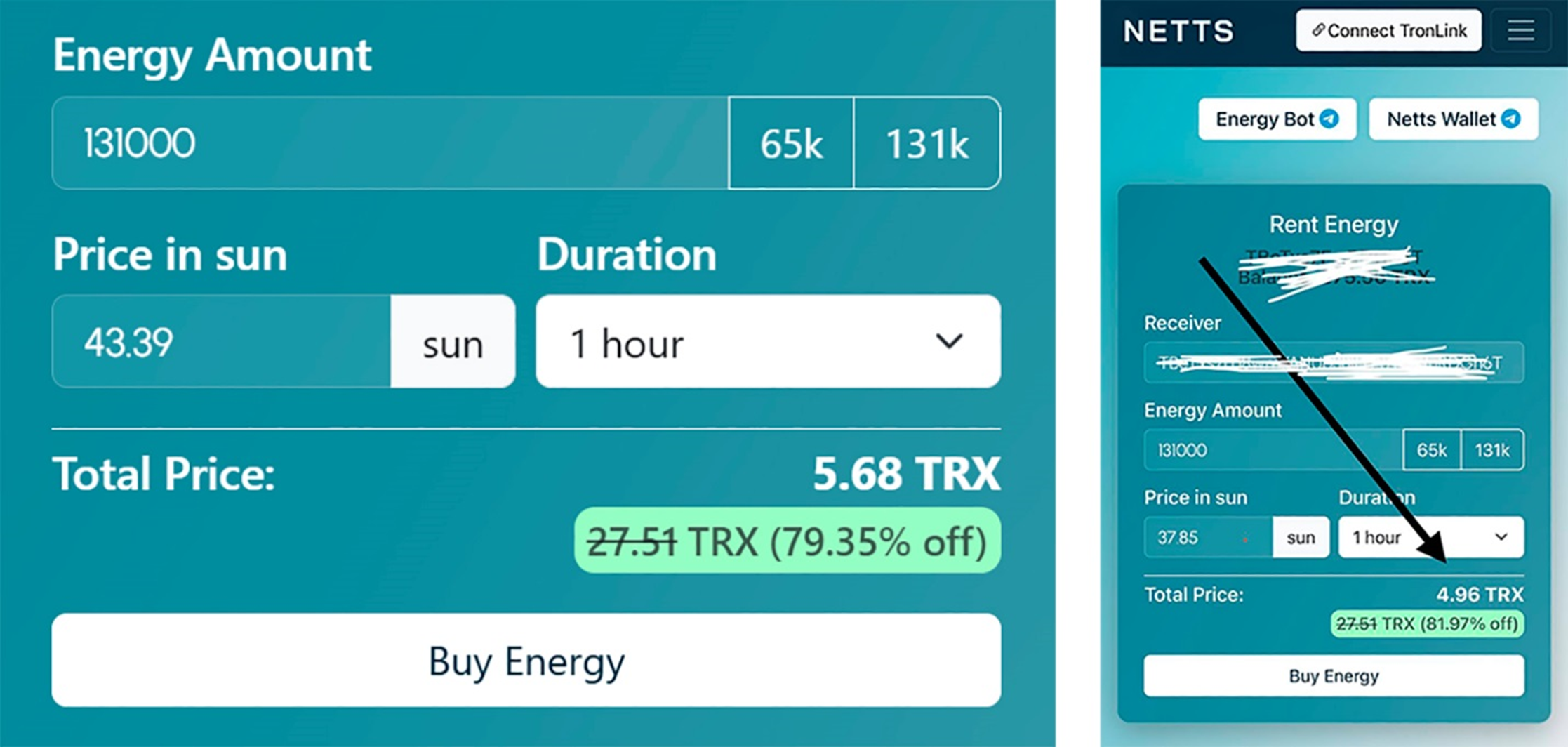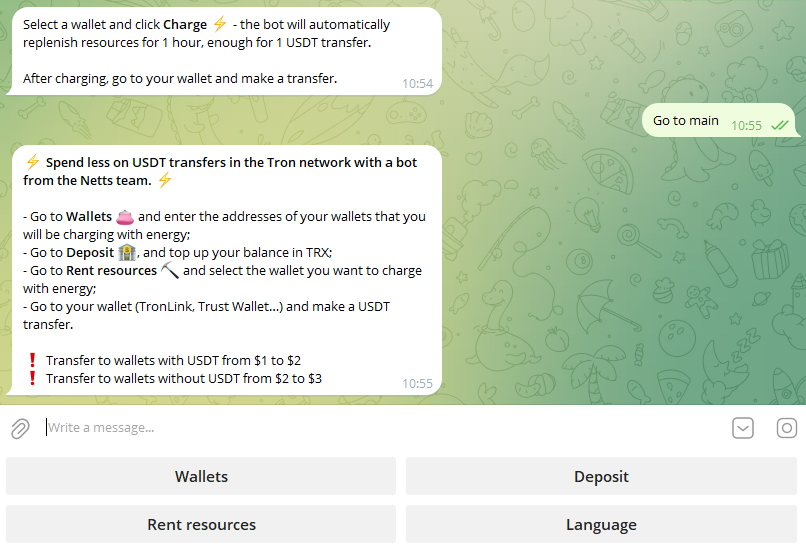Why Is Energy Rental a Profitable Solution for Crypto Wallet Owners?
There are over 63 million holders of the Tron eco-platform's stablecoin – USDT TRC-20. If interested, the distribution of this token in the cryptocurrency world can be viewed on the chart in TronScan, but we will limit ourselves to demonstrating how the number of USDT TRC-20 holders in the Tron blockchain is steadily growing.

Stablecoins are popular among those involved in cryptocurrency because they are pegged to the rate of fiat currencies and have less volatility than native crypto.
As for the USDT stablecoin of the TRC-20 standard, it was issued by Tether Limited specifically for use on the Tron blockchain. Recently, by the way, Tether issued an additional 1 billion USDT on the Tron network. And according to the results of the past year, USDT TRC-20 led in the category of transactions made by real people, not bots, with a share above 68%.
Therefore, it is not surprising that daily owners of this stablecoin, whose rate is pegged to the US dollar, perform tens of billions of transactions on the Tron blockchain.

And what attracts the issuing company and users to the Tron ecosystem are almost instantaneous transactions and minimal gas fees.
Why then do many crypto wallet owners face high fees with frequent cryptocurrency transfers, especially USDT on the Tron network? With active use of USDT TRC-20 in business, these fees can significantly increase costs.
Bad news: if you are still paying high fees for USDT transfers on the Tron network, it means you don't know that the blockchain actually provides you with the opportunity to minimize gas fees as much as possible.
Good news: now we will explain how renting Energy on the Tron network helps users who frequently send cryptocurrency to significantly reduce fees and optimize expenses.
What is Energy on the Tron Network?
If you complain about high commissions on the Tron network, it means you are paying for gas in the native currency – TRX. Or you are using the GasFree function – meaning you pay 10 USDT for any transaction with this stablecoin.
This means you are not familiar with the concept of special resources on the Tron network, which are designed to significantly reduce commissions when interacting with smart contracts. One of the main resources – Energy – is even called fuel for smart contracts. USDT used on the Tron network is a smart contract based on the TRC-20 standard token.
Explanation of the Energy Concept in the Tron Blockchain
Energy is a specially created resource in the Tron ecosystem, necessary for executing smart contracts and transactions with TRC-20 tokens, including USDT. By giving this resource as a commission, you compensate the blockchain for the costs of additional energy and computing power attracted specifically for this particular transaction.
This is why the gas fee increases during high network congestion.
If there is insufficient Energy in the user's wallet, the system automatically charges the commission in the native crypto – TRX, without warning, which increases the transaction cost. After all, Energy can be obtained on the balance as a reward for staking TRX or even rented from a special Energy rental service.
In the first case – staking – the received Energy will cost you nothing. But to get resources for a couple of daily transfers, you need to freeze about 24,000 TRX. But it might also happen that the received Energy may not be enough for the planned transactions because you are forced for some reason to transfer USDT during a period of high network congestion.
How Does Renting Energy Reduce Fees?
All the problems outlined above are completely eliminated if you use rented Energy. It is very important to choose a service that offers the most automated rental process mechanism. A service with a Telegram bot is preferable to a regular platform, and a web interface with API mechanisms is even better for cryptocurrency business platforms.
Energy Rental Mechanism and its Advantages
- Without withdrawing assets from circulation. Renting Energy allows users to obtain the necessary volume of Energy without needing to freeze a large amount of TRX.
- Savings on commissions. Renting Energy can reduce commission costs by 65% or more, as confirmed by practical examples.
In the screenshot below, you see the bill from the NETTS Energy rental service for 131K units of Energy rented for 1 hour. The first was taken during the day, and the second – at night, during the period of minimal Tron network load. On average – 80%! This is the only such offer on the Energy rental market.

Those who actively transfer USDT should not forget that Tron implemented a dynamic energy supply model long ago.
But for those who rent Energy and send stablecoins to a dozen different addresses at any time – this is not a problem. Especially if you cooperate with a service that actively implements and develops API technologies.
A service like NETTS can provide you with balance charging as soon as the Energy reserve drops to a level you set – this is the trigger-based Smart mode. And if you choose the Host mode in the Workspace personal account, you can select one of the options: constant Energy replenishment as soon as the previous "portion" is spent on a transaction, or balance charging according to your required schedule – cyclical Energy supply.
Practical Steps for Renting Energy
To ensure the balance always has a sufficient supply of Energy, you won't have to perform any complex actions: staking, buying, exchanging, etc. Of course, this is true if you make the right choice.
Renting Energy is the ideal choice both for those who do not interact with smart contracts often, and for active users, especially for various cryptocurrency business platforms operating on the Tron network daily and sending USDT to dozens of addresses.
Instructions for Renting Energy to Reduce Fees
Service Selection. There are various platforms offering Energy rental, such as the already mentioned NETTS with a web interface with API and Netts Energy Charge Bot, TRON POOL BOT – a Telegram bot, FeeSaver with auto and manual Energy rental settings, Tronify, etc.
Carefully study not only the promised percentage of savings but also the capabilities of the technologies used by the services. Not all services can ensure Energy delivery according to a schedule.
With the NETTS service, it's very simple – just set the trigger, as shown in the screenshot below, and when the Energy volume decreases, your balance will be replenished.

Rental Process. If the user has an insignificant number of transfers, the process usually involves launching the bot in Telegram, setting up wallets for Energy replenishment, and paying for the service in TRX.

For active users and business platforms, a service that allows logging in via a web interface and setting a schedule for Energy delivery to the wallet is preferable.
Use as Intended. After receiving Energy on the balance, the rental service client can conduct transactions with minimal fees.
Conclusion
Renting Energy in the Tron ecosystem is an effective way for users to reduce commission costs with frequent cryptocurrency transfers, particularly USDT TRC-20 stablecoins.
It is an opportunity to stop the wasteful burning of TRX by paying for transactions with cheap rented Energy instead of native crypto.
Besides optimizing expenses, renting Energy also ensures transaction efficiency – the risk of freezing due to insufficient resources on the balance is eliminated.
You can have all this right now. Test the NETTS Energy rental service by depositing just 1 TRX into Workspace. From this moment, your 80% for any transaction with TRC-20 will always remain with you!